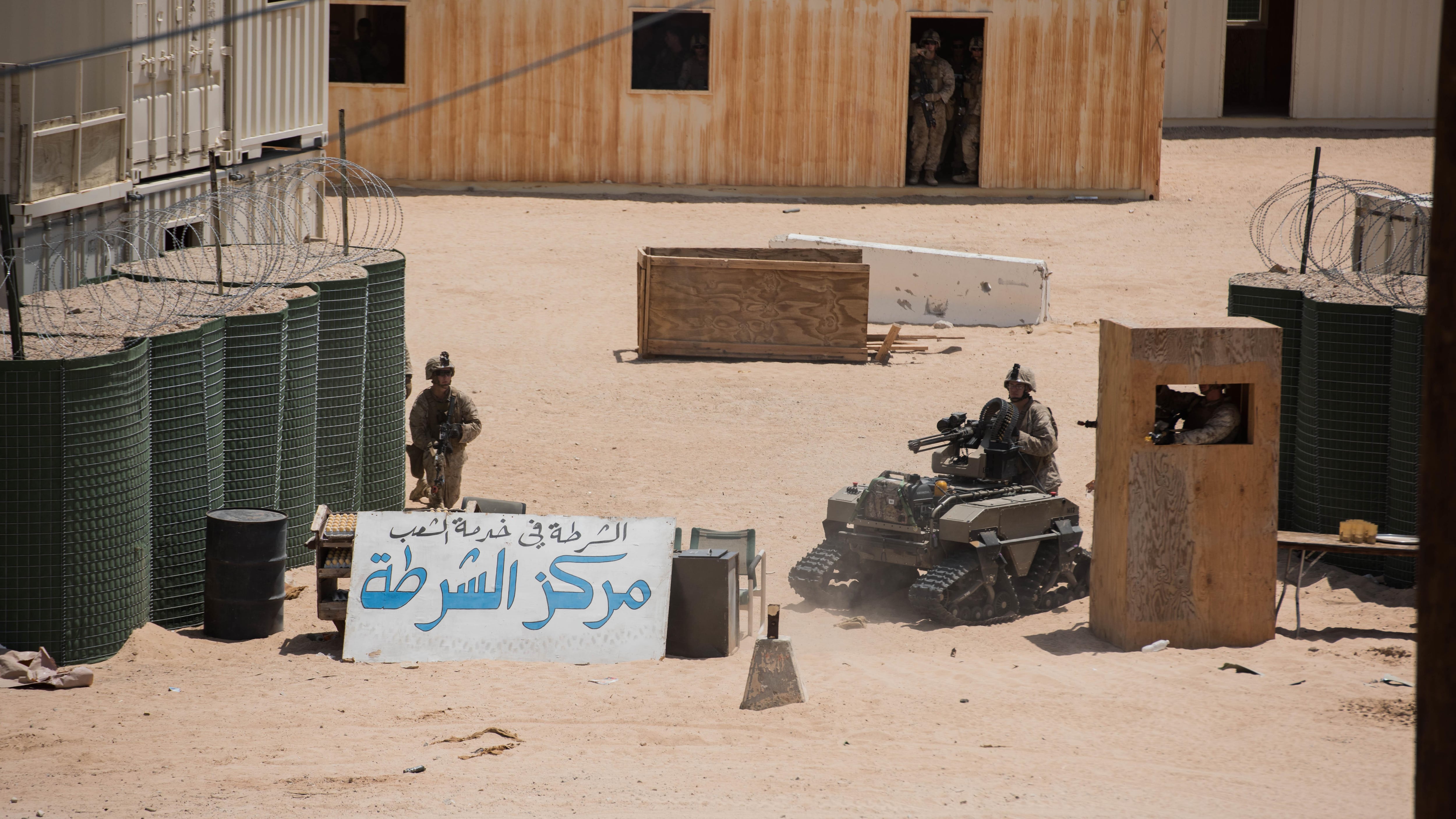Marine Corps leaders are finalizing several important changes that will redefine the size, composition and capability of its smallest combat units.
The effort, according to Lt. Gen. Robert Walsh, commanding general of Marine Corps Combat Development Command, aims to equip deployed Marines with the latest battlefield technologies and, ultimately, enhance their lethality. Soon, the service's small squads and landing teams will receive tailored intelligence, cyber, and surveillance capabilities, assets typically reserved for much larger battalions and regiments. It's a necessity, Walsh told Marine Corps Times, for the types of adversaries they are likely to encounter over the next decade.
The service's commandant, Gen. Robert Neller, is expected to approve the changes by the end of September. Its details will be included in a new Marine Corps Operating Concept, a document governing how troops and units are trained, equipped and employed for years to come.
"We had some confusion across the Marine Corps regarding" Expeditionary Force 21, Walsh said, referring to a broad strategy document put forward in 2014 by Gen. James Amos, then the service's commandant. "It had good stuff in it, but from a pure standpoint, an operating concept should identify how you operate. This does, and ... will drive everything we do."
At its core, the new operating concept is built around the belief that Marines will face a growing number of so-called hybrid threats — think Russia's covert influence in the separatist movement within Ukraine — in densely populated cities near major bodies of water. American ground forces will need to move more quickly than they do today, Walsh said, and they will likely be distributed over greater distances than they were on the battlefields of Iraq and Afghanistan. They'll also need unrivaled firepower and technology, he added. This includes the ability to gather and analyze signals intelligence, and to conduct cyber and information warfare.
It's unclear precisely how many Marines will compose these new expeditionary units, officials said. Those specifics are still in the works. Most changes to large-scale units, such as the Marine Expeditionary Force, will be organizational rather than numeric. But the size and construct of smaller units, such as the squad and company, could see significant changes.
For the next 18 months, Marine Corps leaders will evaluate the work of a test unit, 3rd Battalion, 5th Marines, which was reconfigured and re-equipped ahead of its scheduled deployment throughout the Asia-Pacific region as part of the 31st Marine Expeditionary Unit. The battalion, which is home based in California, is testing several new tactics and technologies. The work got underway in late July as part of a two-week experiment on the West Coast.
From that, evaluators concluded that company-size landing teams should be reinforced with more command-and-control capability, more unmanned aerial systems and robots with improved sensors and lasers. There needs to be more specialists and support to process, exploit, and disseminate all of this information, Walsh said.
This will likely require Marines take on additional training and qualifications, a model special operations forces have validated in the past. Walsh also is leaning toward the Marine Expeditionary Force being a "reservoir of capabilities" in which many skill sets are maintained in communications and intelligence battalions, or in a MEF information warfare group.
That way,
commanders can organize around tasks and tailor a force against specific threats in specific regions.
They want to call this beefed up infantry company an "expeditionary landing team."
Officials are concerned as well about the geographical distance between these landing teams and their higher headquarters. In the past, it was believed that 120 miles was sustainable, but Walsh says he's not confident that's doable in a "nonlinear" operating environment, where Marines are engaged in a high tempo campaign across the spectrum of warfare: land, air, cyber and electronic.
"They are not going to be able to operate as far out as we initially thought," said the general, who also serves at the Marines' deputy combat for combat development and integration. An extended expeditionary landing team operation "would require significant enablers and support from the battalion."
Future experiments will determine acceptable deployment distances from the Marines' main force, and how far apart distributed units can be separated and still function as a unified force.

Members of Kilo Company, 3rd Battalion, 5th Marines, use a Weaponized Multi-utility Tactical Transport to repel a fictional attack while training in Twentrynine Palms, California, in July. (Sgt. Cuong Le/Marine Corps)
As the Marine Corps' combat developer, Walsh is focused on technological innovation, and he is soliciting ideas from rank-and-file personnel. The latest invitation, issued Sept. 15, seeks new ways to use robotics and unmanned systems.
What can a commander do, for instance, if his Marines discover an enemy drone spying on them and they need to quickly disable it or jam its signal? Walsh is devising a rapid-equipping approach that, officials hope, will help speed new technology to the fleet before it's obsolete. The commandant, he said, has "his foot on the gas. He is going real fast and pushing us real hard."
To pay for this, the Marine Corps' leaders are prepared to make some hard choices and, perhaps, reduce some existing capabilities. This means the service is likely to buy enough of a new item to provide it only to units that are deployed or preparing for a deployment. One example: Only a portion of the Marines' amphibious and light-armored vehicles will be upgraded and money will be directed instead toward developing replacements. Anti-armor and motor transport assets may be consolidated so the money needed to maintain them can purchase more signals intelligence assets, electronic warfare capability or weapons that can cover greater distances.
The service's aviation squadrons already are using this approach. Officials can't afford to give every unit the people and gear it needs to exploit and process the massive amounts of data generated by the Marines' new F-35B joint strike fighter. Instead, it will grow information warfare squadrons that can deploy down as needed.
"Everybody would like to have everything where they are at. We can’t afford that," Walsh said. "So we have to be able to keep it at a centralized place and push that down."





